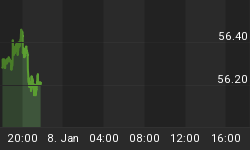The slow death of brick and mortar retail, ghost malls and new fashion trends have combined to unexpectedly boost a market segment that seems befitting for a post-pandemic lifestyle change: Second hand retail.
Nothing better illustrates that than the $7.1-billion valuation second-hand e-commerce company Poshmark hit in its first day of trading, ending which up more than 141%.
The company initially priced its IPO at $42 a share, giving it an initial valuation of more than $3 billion.
With 6.2 million active buyers and 31.7 million active users, Poshmark brought in nearly $200 million in revenue in the first three quarters of 2020, an increase of 28% from the same period last year. It also made a profit of $20.9 million, after losing $34 million a year before.
While filing to go public in December, the company said it has benefited from a flood of demand generated by the coronavirus, as local governments ordered people to stay indoors and retail stores closed so stuck-at-home shoppers turned to e-commerce for.
Of course, Poshmark is not the only one secondhand goods marketplace that has gained in popularity.
Several other players gained, as well, including luxury consignment site TheRealReal, sneaker reseller StockX and virtual thrift store ThredUp.
According to a new report by ThredUp and GlobalData Retail, the secondhand apparel market is valued at about $28 billion today and is forecast to reach $64 billion within five years.
The report also stressed that the resale market grew 25 times faster than the overall retail market last year
As for Poshmark, the majority of its customers are female and either millennials or Gen Z. The latter group, an upcoming major shopping force, is starting to dictate fashion and shopping.
However, if it is up to Generation Z, fashion habits might move in even more bizarre directions as they are embracing virtual clothing.
Aside from saving time (and money) on shopping, the virtual clothing industry is also about reducing waste and helping to ward off climate change--something this generation seems to take seriously.
Brick-and-mortar was dying a slow death even before COVID-19, and America’s shopping malls have been relative ghost towns.
Over the past few years, retail businesses in the U.S. have been on a downward spiral, and the pandemic just kicked it into overdrive. Last May, JCPenney filed for Chapter 11 bankruptcy protection and started closing its stores this week. Jeans maker True Religion and luxury department store Neiman Marcus did the same.
The staggering rate of store closures that rocked the retail industry continued in 2019, with retailers setting a new record for store closings, a total of just above 9,000.
For this year, Coresight Research predicts that U.S. retailers could announce between 20,000 and 25,000 closures. More than half of those are situated in America’s malls.
At the same time, malls across the nation are becoming fulfillment centers for e-commerce. Amazon and Simon Property Group, the biggest U.S. mall owner are in talks to convert bankrupt megastores such as empty JC Penney and Sears stores into fulfillment centers.
Simon Property Group malls have 63 JCPenney stores and 11 Sears stores across the country--so there’s a fair amount from which to choose.
By. Fred Dunkley for Safehaven.com

















